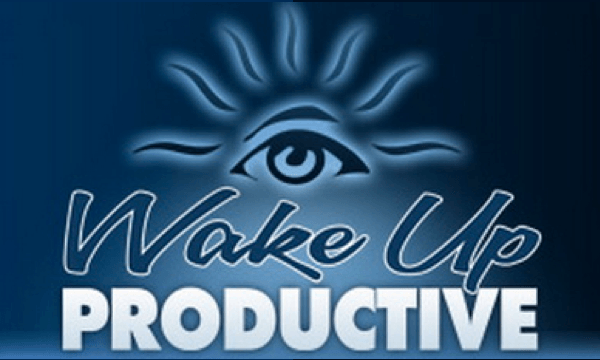- What is an action plan?
- What are the criteria for a good action plan?
- Why should you develop an action plan?
- When should you develop an action plan?
- How to write an action plan
What is an action plan?
In some ways, an action plan is a “heroic” act: it helps us turn our dreams into a reality. An action plan is a way to make sure your organization’s vision is made concrete. It describes the way your group will use its strategies to meet its objectives. An action plan consists of a number of action steps or changes to be brought about in your community.
Each action step or change to be sought should include the following information:
- What actions or changes will occur
- Who will carry out these changes
- By when they will take place, and for how long
- What resources (i.e., money, staff) are needed to carry out these changes
- Communication (who should know what?)
What are the criteria for a good action plan?
The action plan for your initiative should meet several criteria.
Is the action plan:
- Complete? Does it list all the action steps or changes to be sought in all relevant parts of the community (e.g., schools, business, government, faith community)?
- Clear? Is it apparent who will do what by when?
- Current? Does the action plan reflect the current work? Does it anticipate newly emerging opportunities and barriers?
Why should you develop an action plan?
There is an inspirational adage that says, “People don’t plan to fail. Instead they fail to plan.” Because you certainly don’t want to fail, it makes sense to take all of the steps necessary to ensure success, including developing an action plan.
There are lots of good reasons to work out the details of your organization’s work in an action plan, including:
- To lend credibility to your organization. An action plan shows members of the community (including grant makers) that your organization is well ordered and dedicated to getting things done.
- To be sure you don’t overlook any of the details
- To understand what is and isn’t possible for your organization to do
- For efficiency: to save time, energy, and resources in the long run
- For accountability: To increase the chances that people will do what needs to be done
When should you create an action plan?
Ideally, an action plan should be developed within the first six months to one year of the start of an organization. It is developed after you have determined the vision, mission, objectives, and strategies of your group. If you develop an action plan when you are ready to start getting things done, it will give you a blueprint for running your organization or initiative.
Remember, though, that an action plan is always a work in progress. It is not something you can write, lock in your file drawers, and forget about. Keep it visible. Display it prominently. As your organization changes and grows, you will want to continually (usually monthly) revise your action plan to fit the changing needs of your group and community.
How to write an action plan
Determine what people and sectors of the community should be changed and involved in finding solutions
If you have been using the VMOSA (Vision, Mission, Objectives, Strategies, Action Plans) model, you might have already done this, when you were deciding upon your group’s objectives. Again, try to be inclusive. Most of the health and development issues that community partnerships deal with are community-wide, and thus need a community-wide solution. Possible sectors include the media, the business community, religious organizations, schools, youth organizations, social service organizations, health organizations, and others.
Some members of the community you might consider asking to join the action planning group include:
- Influential people from all the parts of the community affected by your initiative (e.g., from churches and synagogues, the school system, law enforcement, etc.)
- People who are directly involved in the problem (e.g., local high school students and their parents might be involved in planning a coalition trying to reduce teen substance abuse)
- Members of grassroots organizations
- Members of the various ethnic and cultural groups in your community
- People you know who are interested in the problem or issue
- Newcomers or young people in the community who are not yet involved
Let’s consider some of the people who were involved with the planning group for the fictional Reducing the Risks (R.T.R) Coalition that hopes to reduce the rate of teen pregnancy. Some of the members of this planning group included teachers at the local high school, local teenagers and their parents, members of the clergy, counselors and school nurses, staff of the county health department, and members of youth organizations, service agencies, and other organizations that focus on youth issues.
Convene a planning group in your community to design your action plan. This might be the same group of people who worked with you to decide your group’s strategies and objectives. If you are organizing a new group of people, try to make your planning committee as diverse and inclusive as possible. Your group should look like the people most affected by the problem or issue.
Once everyone is present, go over your organization’s:
- Vision
- Mission
- Objectives
- Strategies
- Targets and agents of change (e.g., youth, parents and guardians, clergy)
- Proposed changes for each sector of the community (e.g., schools, faith community, service organizations, health organizations, government)
Develop an action plan composed of action steps that address all proposed changes. The plan should be complete, clear, and current. Additionally, the action plan should include information and ideas you have already gathered while brainstorming about your objectives and your strategies. What are the steps you must take to carry out your objectives while still fulfilling your vision and mission? Now it’s time for all of the VMOSA components to come together. While the plan might address general goals you want to see accomplished, the action steps will help you determine the specific actions you will take to help make your vision a reality. Here are some guidelines to follow to write action steps.
Members of the community initiative will want to determine:
- What action or change will occur
- Who will carry it out
- When it will take place, and for how long
- What resources (i.e., money, staff) are needed to carry out the change
- Communication (who should know what)
Things to note about this portion of the RTR action plan:
- It appears complete. Although this step seems fully developed, we would need to review the entire action plan to see whether all community and system changes that should be sought are included.
- It is clear. We know who will do what by when.
- It seems current. We would need to know more about other current work (and new opportunities and barriers) to judge whether this portion of the action plan is up-to-date.
Review your completed action plan carefully to check for completeness. Make sure that each proposed change will help accomplish your group’s mission. Also, be sure that the action plan taken as a whole will help you complete your mission; that is, make sure you aren’t leaving anything out.
Follow through. One hard part (figuring out what to do) is finished. Now take your plan and run with it! Remember the 80-20 rule: successful efforts are 80% follow through on planned actions and 20% planning for success.
Keep everyone informed about what’s going on. Communicate to everyone involved how his or her input was incorporated. No one likes to feel like her wit and wisdom has been ignored.
Keep track of what (and how well) you’ve done. Always keep track of what the group has actually done. If the community change (a new program or policy) took significant time or resources, it’s also a good idea to evaluate what you have done, either formally or informally.
Keep several questions in mind for both yourself and others:
- Are we doing what we said we’d do?
- Are we doing it well?
- Is what we are doing advancing the mission?
You can address these questions informally (ask yourself, chat with friends and other people), as well as formally, through surveys and other evaluation methods.
Celebrate a job well done! Celebrate your accomplishments; you and those you work with deserve it. Celebration helps keep everyone excited and interested in the work they are doing.
After you’ve written your action plan: Getting members to do what they said they would
Every community organization has undoubtedly had this happen: you plan and you assign tasks to get everything you’ve planned to do accomplished. Everyone agrees (maybe they even offer) to do certain tasks, and you all leave with a great feeling of accomplishment. The problem? At the next meeting, nothing has been done. Besides tearing out your hair, what can you do?
Fortunately, there are several things you can try. It’s particularly tricky in the case of volunteers, because you don’t want to lean too hard on someone who is donating their time and energy to begin with. Still, you can make it easier for members to get things done (and harder to avoid work) without acting like the mean neighbor down the street. Some of these gentle reminders include:
- Regular phone calls from staff members or dedicated volunteers asking others how they are doing with their tasks. This should be a supportive call, not a “are you doing what you’re supposed to” call. The person calling can offer emotional support “how are you doing?” as well as see if the group member needs any other assistance. A friendly call such as this can be seen as helpful, give the member the sense that he is a very important part of the group, and serve as a great reminder to do what he said he would do.
- Distributing the action plan in writing to all members, with names attached to specific tasks. (Additionally, this can be a great time to ask for feedback before the plan becomes “official.”)
- Making sure timelines (with due dates) are complete, clear and current.
- At regular group meetings, such as committee meetings or board meetings, ask members to report on accomplishing the tasks they have set out to do. Consider making this a regular part of the meeting.
- Celebrate the accomplishment of tasks. It’s important that getting something done actually means something, and is recognized by the group as a whole.
Follow up on the action plan regularly. You are asking members to be accountable, and to get things done on a regular basis. If they have agreed, you should help them fulfill their commitment as best you can.






